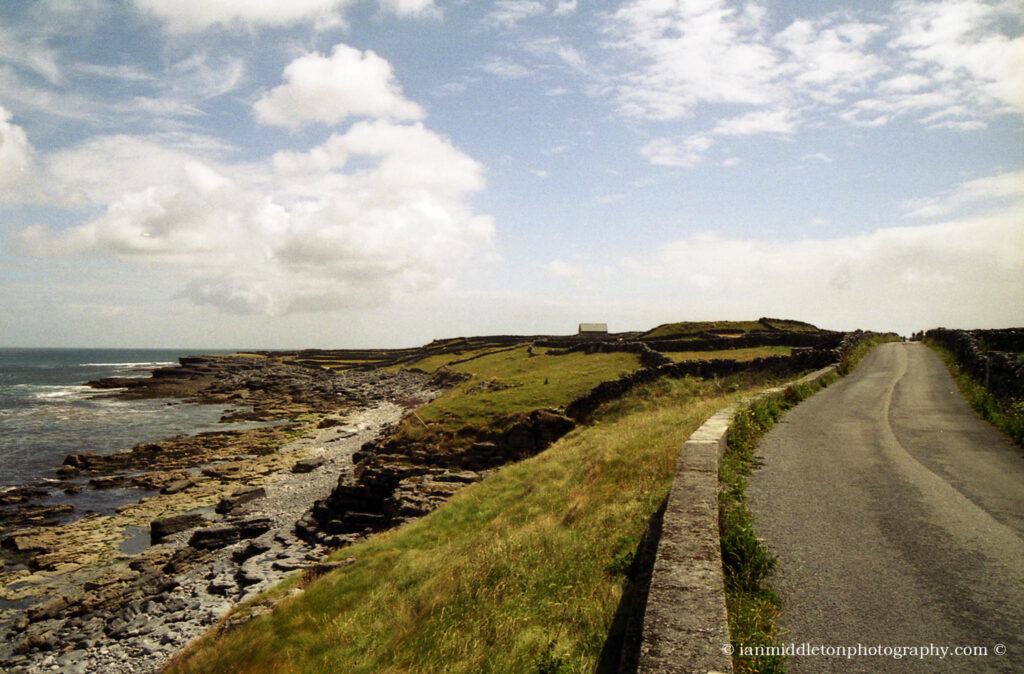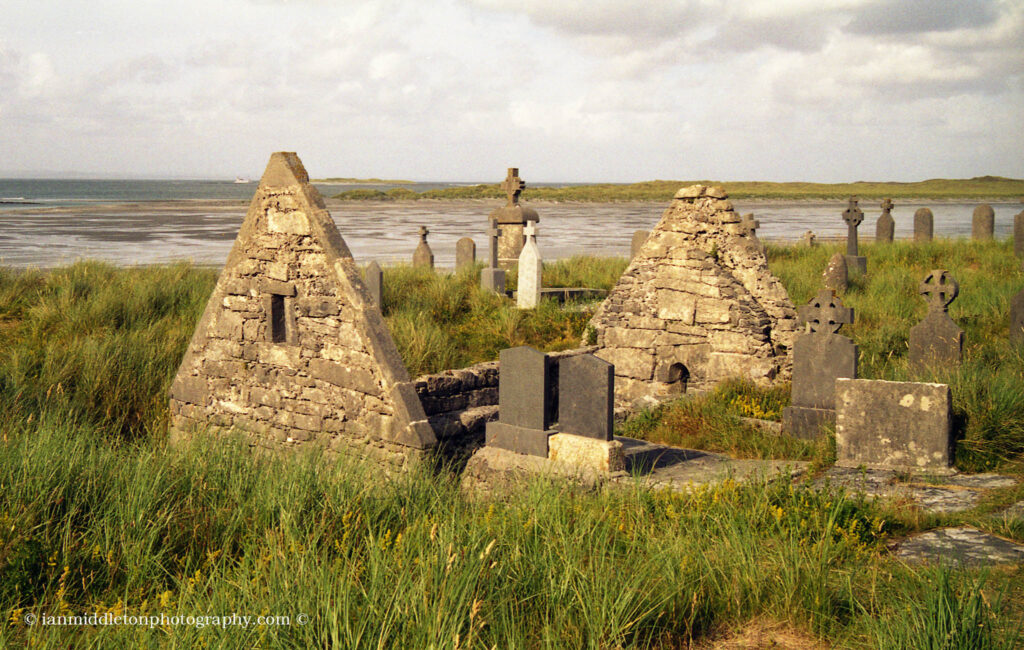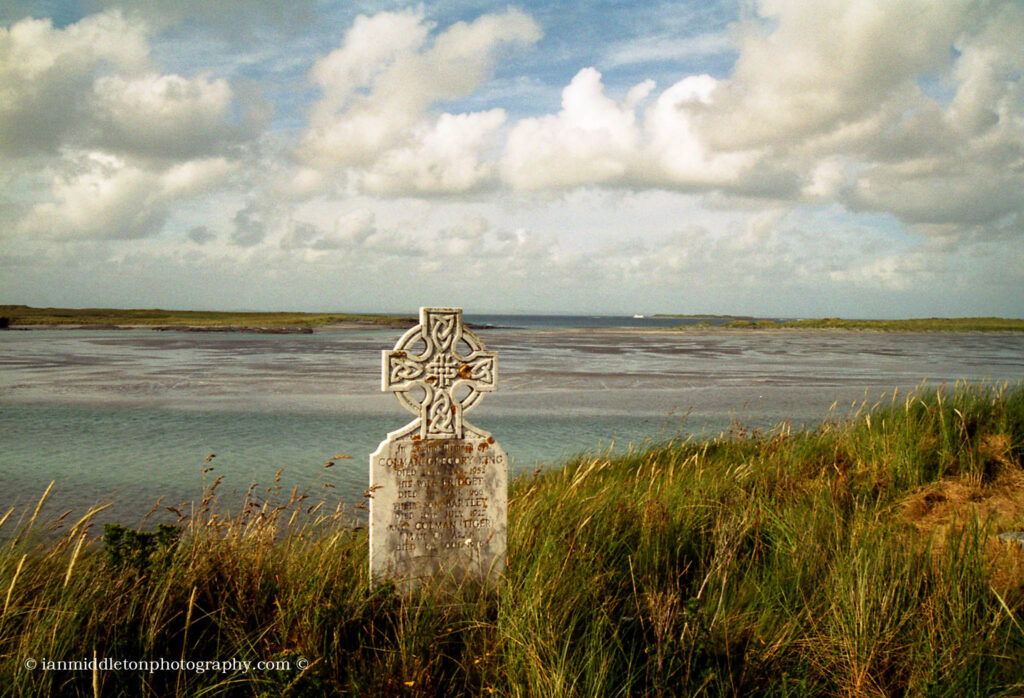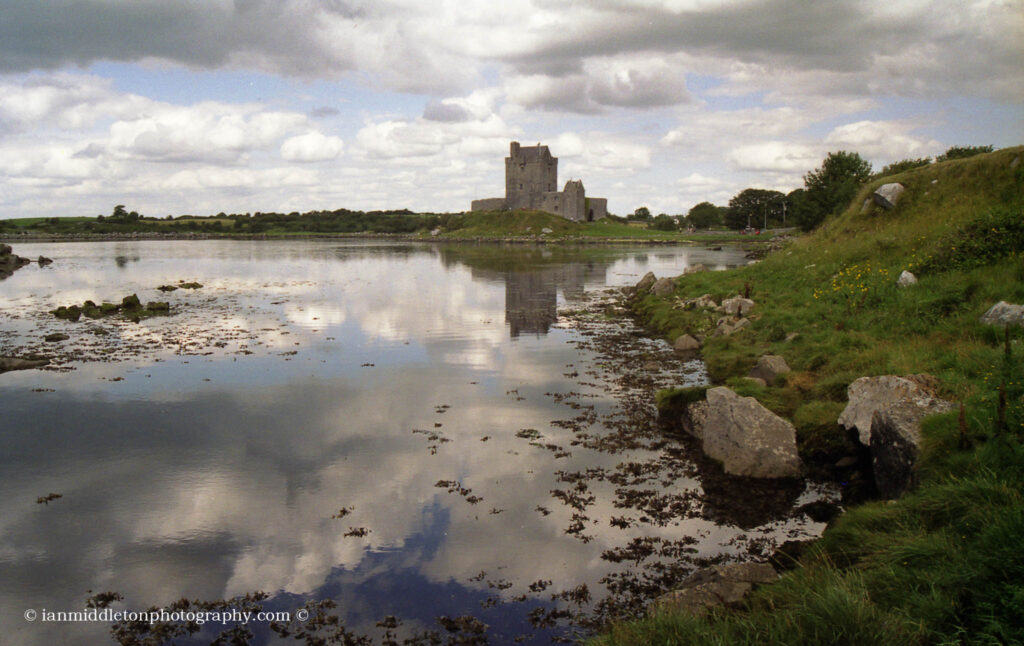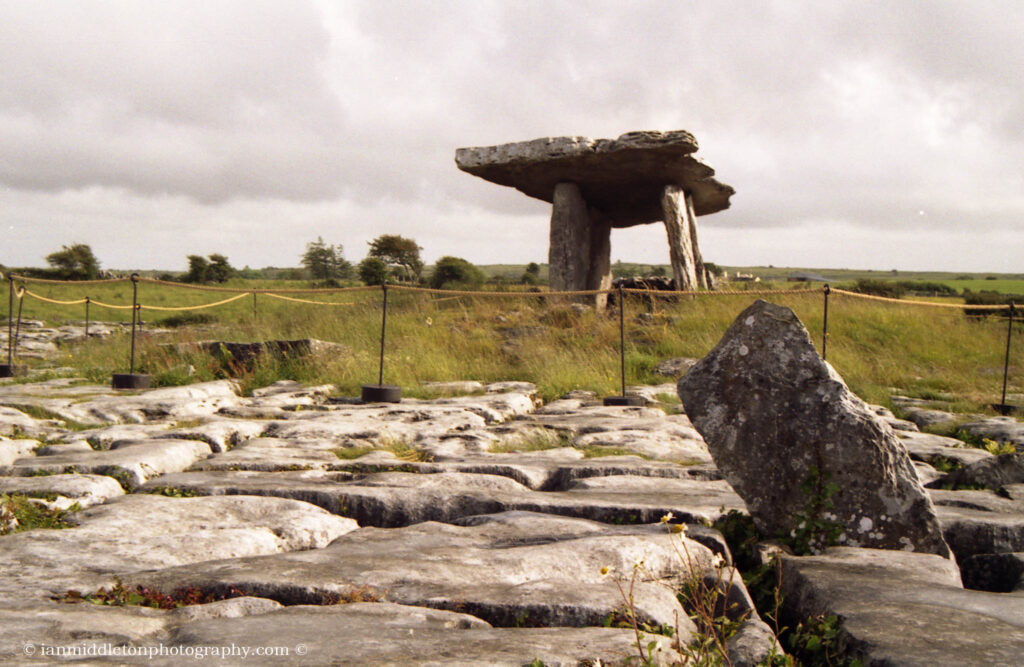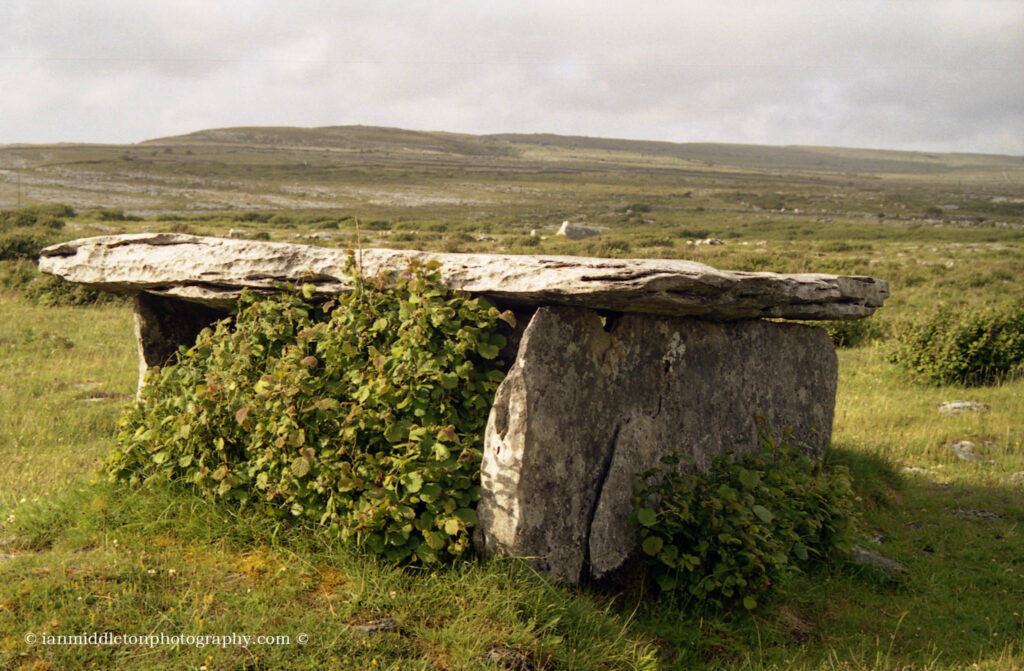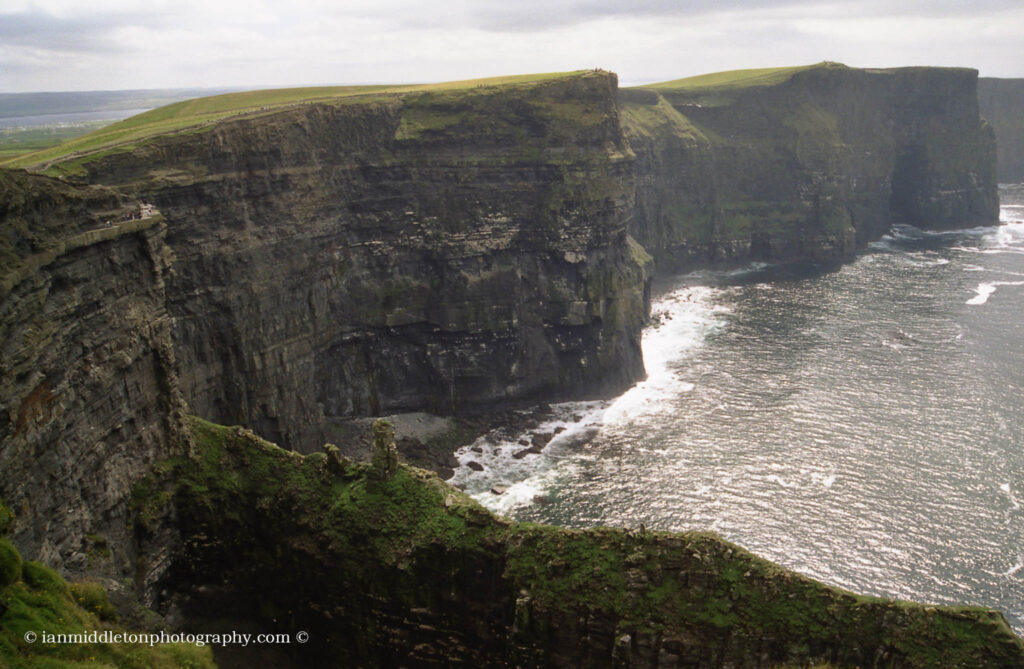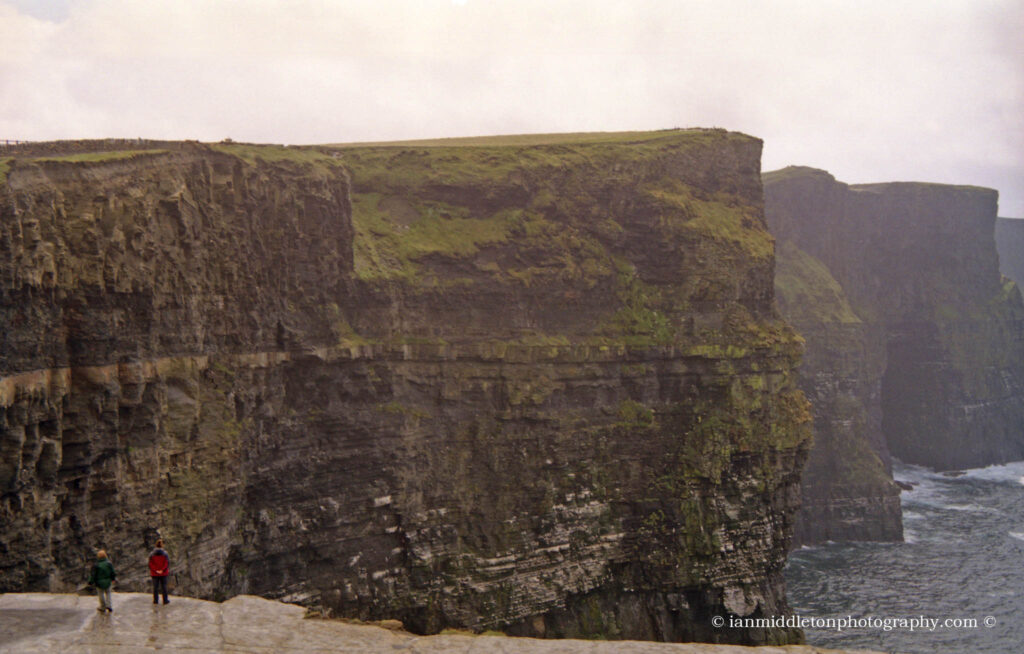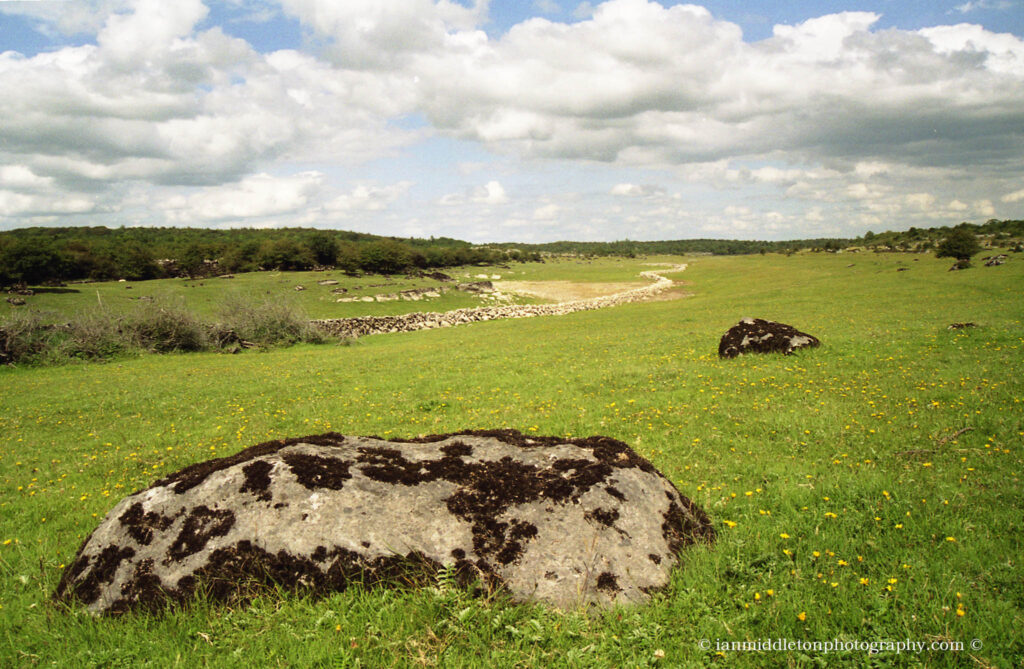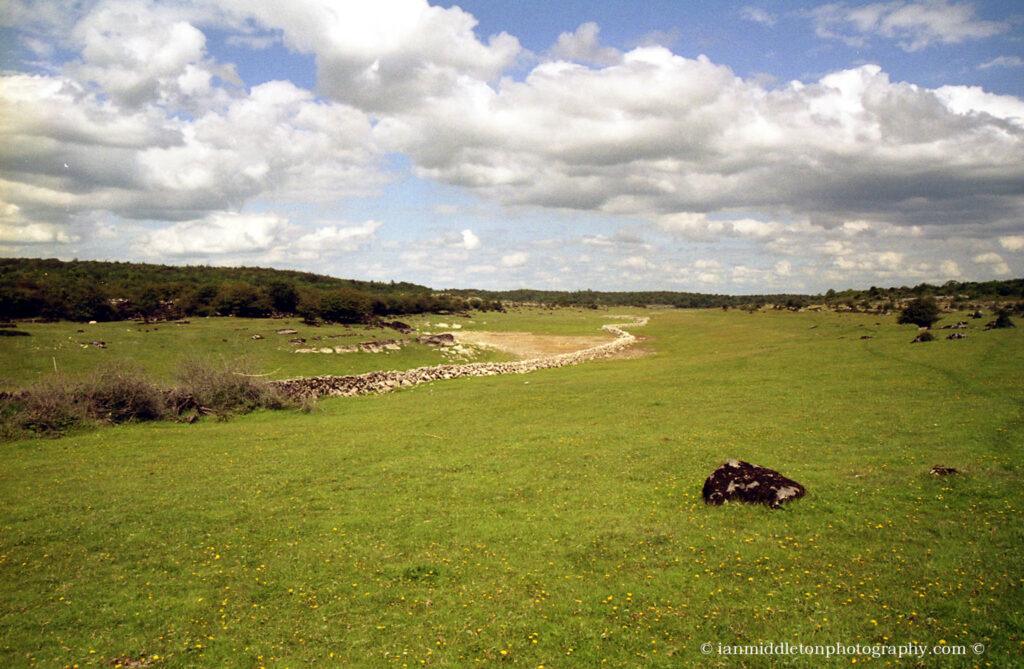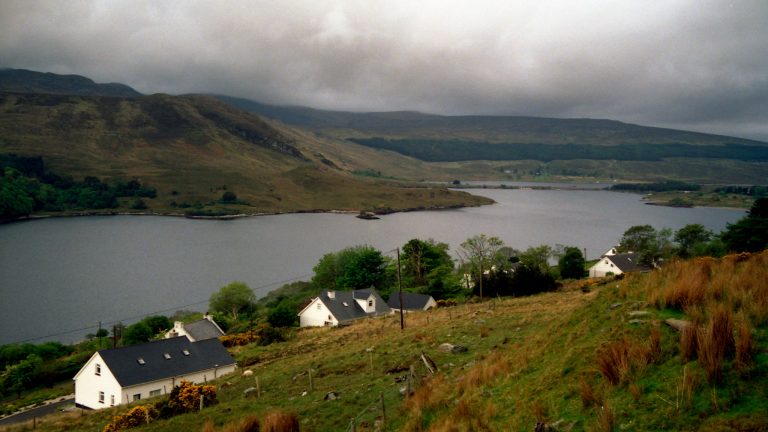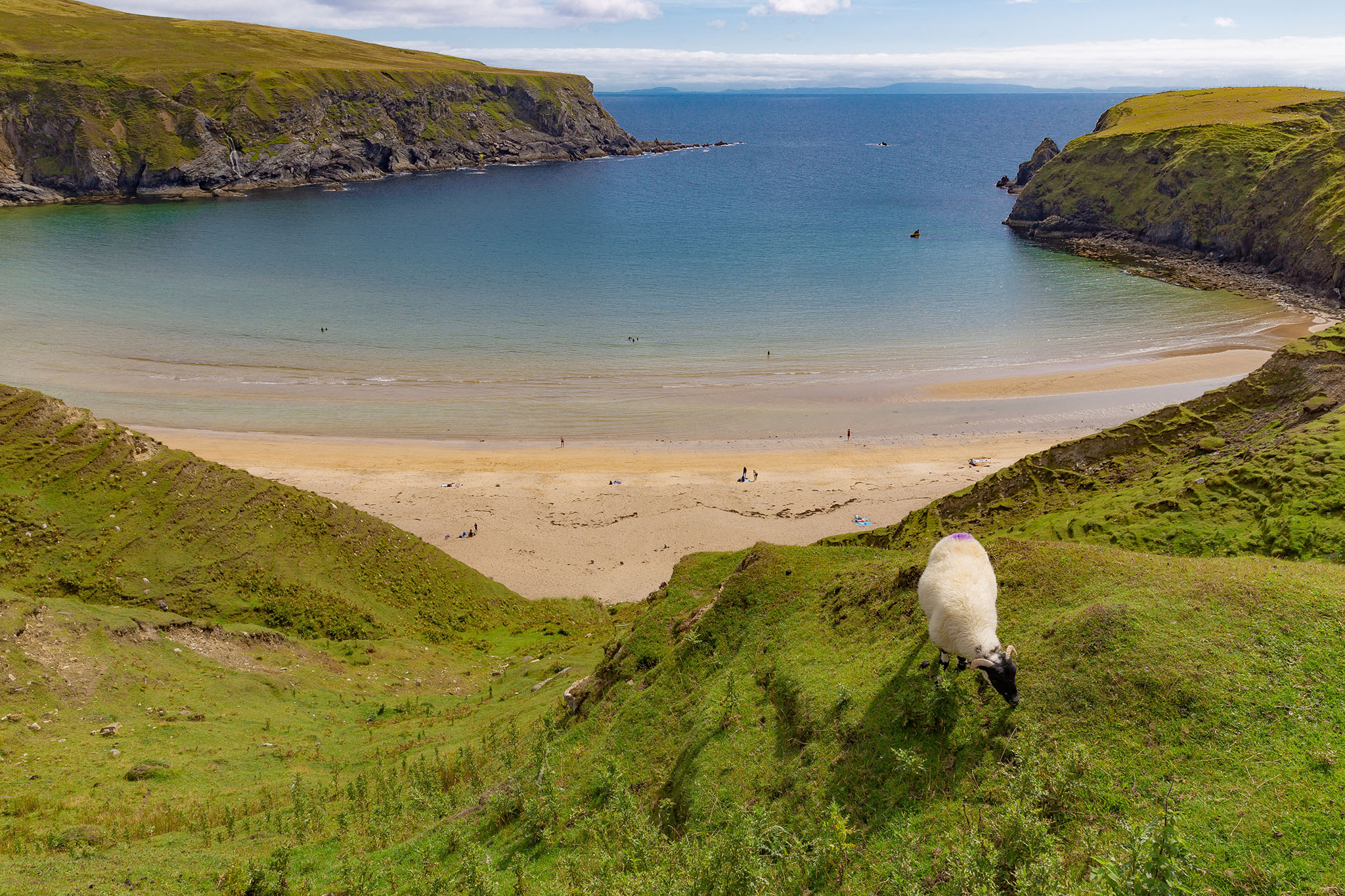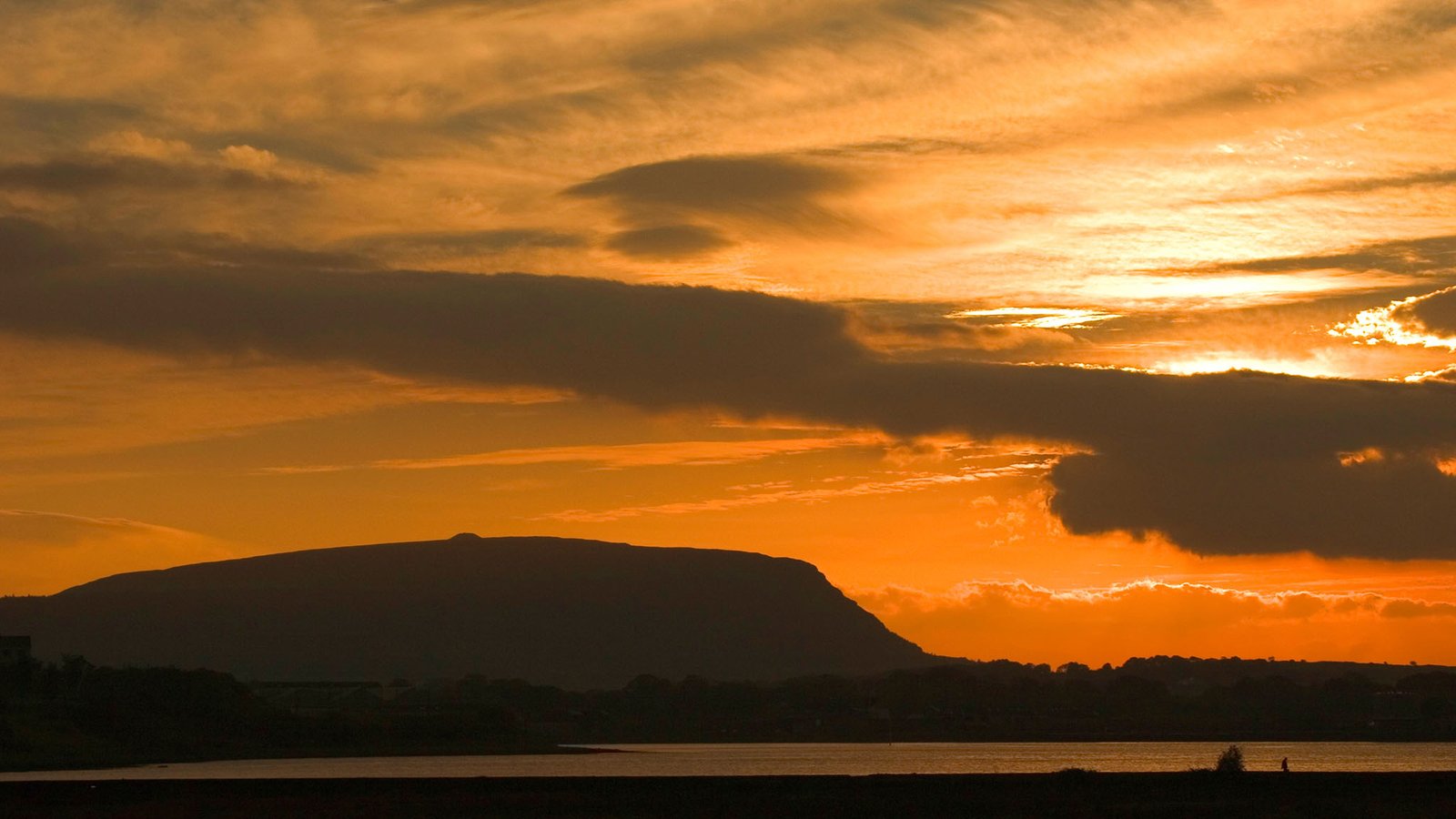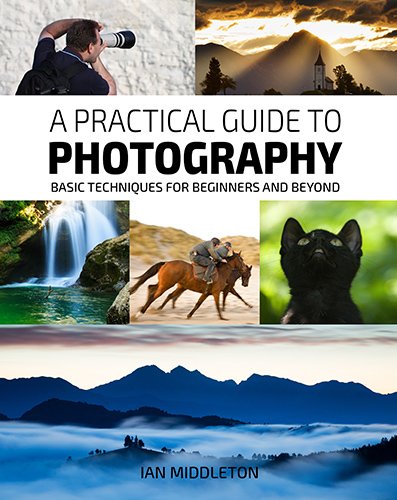The Wild Atlantic Way - Part 6
A series of articles about locations along this 2500km marked tourist route, which runs from Derry in the north to Kinsale in the south
The magnificent fort of Oenghus
The sheer vertical cliff dropped off at a frighteningly steep angle, even tapering inwards as it fell away to the gigantic waves pounding the foot of the cliff 300 feet below. When I first looked over the edge I could see only the ocean far below, and my legs turned to jelly; even though I was actually lying down. It hadn’t helped that I’d needed to cycle up a long path to get here from sea level. The wind howled across the plateau on which I was standing, almost warning me not to be too brave. The three 20-foot thick walls of an ancient ring fort, where I had entered, encircled me. There was no other way in or out, besides this cliff. I was in the magnificent, impenetrable fortress of Dun Aonghasa on the island of Inishmore, the largest of the three Aran Islands in Galway.
Dun Aonghasa was one of the last strongholds of the Fir Bolg, an ancient race that fled to various parts of the country after being defeated by the Tuatha de Danann.
The fort possibly takes its name from Oenghus the God of Love. Aonghus was also said to be a leader of the Fir Bolg. Inishmór is believed to have been the last outpost of the Fir Bolg, and this was most likely their fort.
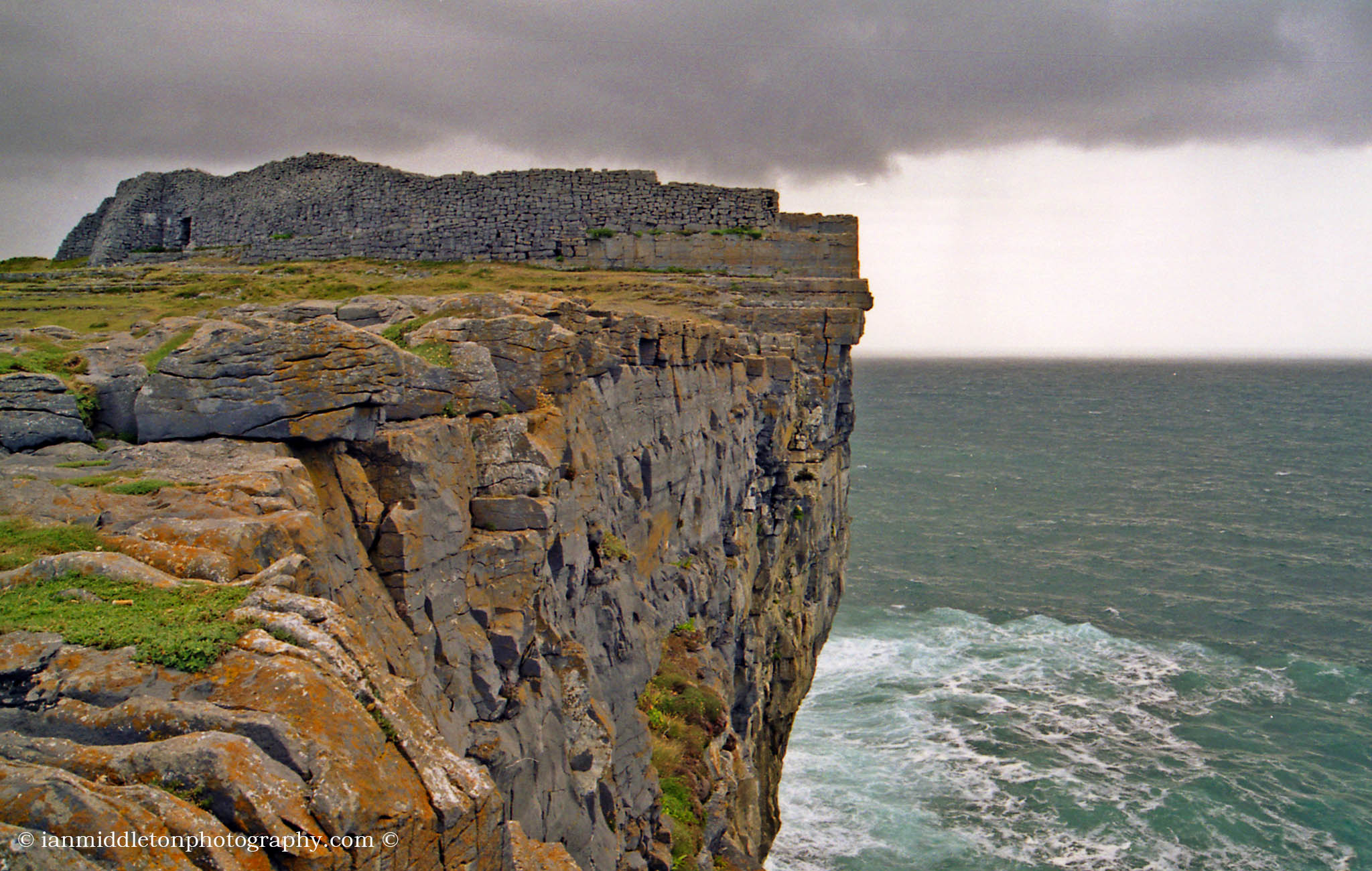
Inis Mór
Inishmore (Inis Mór) is the largest of the three Aran Island, with Inishmaan and Inisheer following closely behind. The Aran Islands are an extension of the huge limestone sheet that covers much of the region of County Clare, known as the Burren. It stretches out to sea and rises dramatically out of the water to form these three beautiful islands.
While Inishmore is the biggest and most visited, the others are also well worth a trip. Aran Island Ferries run regularly from Rossaveal in County Galway and Doolin Ferries from Doolin in County Clare. You can also take a short flight from Connemara airport to Inishmore with Aer Arann, which takes about 8 minutes.
The best and most popular way to see Inishmore is to hire a bicycle. The island is just 9 miles wide and 2.5 at its widest point. Naturally the road network isn’t that extensive, but there are two roads to the next major village of Kilmurvey.
From Kilronan the road climbs up the hill out of town and then you have the choice of continuing along the high road, or taking the coast road. I took the coast road.
For such a small place, the island is littered with ancient monuments. If you hire a bike, they will also give you a great little map of the island. St. Ciarán came here and studied under St. Enda before going off to establish his monastery at Clonmacnois. Just outside of Kilronan, which was the first site I came across, are the remains of a small church dedicated to him. It’s here on the island where he dreamed of a tree in the middle of Ireland. This dream was interpreted by St. Enda, who said that it represented his life’s work.
(I’d like to think that my life’s work would culminate to more than just a tree.)
The church sits on a hill with a lovely view of the coast. It’s a nice, grassy spot and perfect to rest for a while and soak up the peaceful, rhythmic sounds of the sea.
Like Tory Island, the Aran Islands are also Gaeltacht areas, thus all signs are in Irish. There are schools here where people come from all across Ireland and the world to study the Irish language.
There are two other spectacular forts on the island to visit. Dun Dubhchathair (the black fort), and Dun Eoghanachta, a fort established by the Eóghanacht clan from Munster.
Don’t forget Inisheer
If you can, I highly recommend a visit to the smallest of the three islands: Inisheer. This was where I first experienced a true awakening when it came to the Irish people’s passion for music. Danny, who worked at the hostel in Doolin, had come over for the night and was playing his guitar and singing songs in the pub, and his payment was simply to be supplied with beer for the evening.
There are no police on Inisheer, so the pubs stay open for as long as they want. In fact, a newspaper article framed on the wall was testament to this. A few years before, the police had sent over an officer from the mainland disguised as a backpacker, who noted the closing time of the pub and promptly fined them for serving out of hours. The newspaper headline had read: The Landlord that Time Forgot.
Next to this newspaper clipping was a framed illustration depicting a country pub with images of people partying inside, and drunks stumbling about and slumped against the wall outside. Crawling along the roof and watching furtively from behind walls were figures wearing backpacks. The caption read:
Everyone knows there are no police on Inisheer.
It was three o’clock in the morning when suddenly everything fell silent. It was so quiet that you could have heard an ant fart from across the room. I then became aware of a female voice singing, and wandered towards the rear of the pub to find it was a local girl, singing without music. For the next hour I sat and listened intently as each of the locals took it in turn to sing a favourite song of theirs. The songs came from the heart. They weren’t singing for money, or for fame. They were singing because they simply loved the songs, and loved to sing them. And I liked that.
County Clare
Doolin
Signs will tell you for miles that you have entered the Burren region, but for a while you might think that it looks no different from elsewhere in Ireland; until you reach the coast. Suddenly the landscape transforms dramatically from green with a sparse scattering of grey limestone rocks, to a vast, cracked limestone table stretching out to the sea.
The R477 coast road north of Doolin is the most spectacular part of the Burren. Stark grey limestone hills and coastline cover the landscape. Giant slabs of smooth limestone carpet the region, all with deep cracks spreading out like a splintered sheet of glass. Limestone mountains dot the horizon, and it almost feels like you’ve landed on another planet.
The best place to stay here is in the village of Doolin. Not only will you find a ton of accommodation, but it also has a well-deserved reputation for being one the best places to hear live Irish music. Almost every pub will have people playing. Not only the Irish, but people from around the world come here to play with the locals, creating an eclectic mix unique to the area.
Poulnabrone Dolmen
The coastal road runs right around past Black Head to Ballyvaughan. Here I turned inland along the R480 and drove into the heart of the limestone region. There are over seventy identified Neolithic tombs in the Burren region, but I was looking for Poulnabrone, the most photographed dolmen in Ireland.
The dolmen stands on a low cairn about 30 feet in diameter. The capstone looks like a solid stone table sitting on four upright stones. The backstone has collapsed. The capstone slopes towards the back, and this gives it the dramatic look that has attracted so many photographers.
The grave was excavated in 1968 and found to contain the remains of 22 adults and six children, one a newborn baby. Radiocarbon dating suggests that they were buried around 3800BC.
What helps makes this monument so dramatic is the surrounding landscape. The cairn is set around cracked limestone sheets with scattered rocks all around and the Aillwee Mountain sitting on the horizon.
Gleninsheen Wedge Grave
Just over a mile up the road towards Ballyvaughan is the Gleninsheen Wedge Grave. It’s more easily spotted if coming from Ballyvaughan, as it sits about the height of the nearby wall.
This is a magnificent wedge grave. Its capstone is supported by one long stone either side, and it almost looks like a little house. The front is open, and the back is obscured by bushes, yet the rest of it remains completely visible. A solid gold collar was found here, and is now in the National Museum of Ireland. There is also another wedge grave nearby, but this had been badly displaced and only one stone remains standing.
The Cliffs of Moher
Stretching 8 kilometres up the coast and soaring to a height of over 200 metres, the Cliff of Moher have earned a place among the most famous landmarks of Ireland. To this end, they are also one of the most visited. So being able to experience this without the crowds is next to impossible.
Just like Dun Aonghasa, these cliffs drop off at sheer ninety degrees angles. There is a solid concrete ledge where you can lay down flat on your stomach and crawl to the edge to look over. You can hear the waves crashing against sharp rocky outcrops far below and see just how it has eaten into the base of the cliffs, forming craggy recesses and caves. The birds seem like tiny dots flying around and nesting on the cliffs below you. The high cliffs protruding from the sea look like small rocks from here. It’s a truly amazing way to view this spectacular landscape; though the sign in the car park and the fact you have to climb over a wall to get here is testament to the potential risk you take. The cliffs comprise of soft shale and sandstone, and large sections quite often fall away. But it doesn’t seem to stop the crowds.


Turloughs - Portals to the Land of Eternal Youth
Another fascinating phenomenon exists in the Burren called Turloughs. These are seasonal lakes that appear and disappear. There are two theories as to why:
The geological theory is that they appear after periods of heavy rain and drain away during the dryer periods because the limestone is porous. The lakes usually dry up are identified by a white residue.
According to folklore though, they are magical portals to the Tir na Nog, the mythical Land of Eternal Youth where the Celts believe the Tuatha de Danann retreated after their defeat.
Personally, I prefer to believe the latter theory.
Getting to Ireland
Dublin is the main airport for the Rep of Ireland, or else Belfast in Northern Ireland. If you are coming from within Europe then the following airlines are worth looking at.
Wizz Air: Personally I have always found them to be the best and offer the lowest fares.
Skyscanner: A great place to search and compare flights
Ebookers: Ebookers have been around for longer than most and have always offered a great choice of flights.
Getting around
CAR
The best way to get around Ireland is by car. Either take your own car or you can rent one easily from Dublin or any other major city. Here are three great places to look:
BUS
The national bus service connects most major cities, towns and villages and is a good way to get around, especially if you want to meet some locals
If you want a fun way to travel with other like-minded travellers then try the Paddywagon
TRAIN
The national train service also serves a lot of the larger towns and cities. Great for getting from one side of the country to the other.
Tours:
Roc Tours Ireland – Great private driver tours all over Ireland. (Highly Recommended)
Accommodation
Holidu: This is a great website to search for a variety of places to stay.
Hostelworld: If you are looking for budget accommodation then Hostelworld is a great place to search for a variety of backpacker hostels, B&Bs and hotels.
My Ireland Book
Read the story of my first ever trip around Ireland in my book, Hot Footing Around the Emerald Isle.
With just a backpack as a home, a guidebook in one hand, a bizarre travelogue in the other and very little money in my bank account, I leave my home and set off to this little country that has always been my neighbour, yet overlooked by myself for many years as I pursued dreams to travel to far and exotic countries. However, I was soon to learn that one of the most beautiful places in the world was right on my doorstep.

